As striking, laptop screens are becoming closer and closer in feature set to their desktop counterparts. Features such as 1440p or even 4K resolutions high refresh rates, along with technologies are not restricted to the tabletop form element. And best of all, a modest mixture of those features and functionality can be obtained at price points that are non-insane.
In testing with this manual, we predicted from various hardware manufacturers at a stack of gaming notebooks. We limited our choice featuring a GTX 1070 GPU, although the the budget category was limited to laptops as programs with that spec have the very best balance of features, functionality, and price for the majority of gamers. We’re not done yet, although we’re also analyzing GTX 1080 machines. Look for updates to the manual in the forthcoming months using a select there.
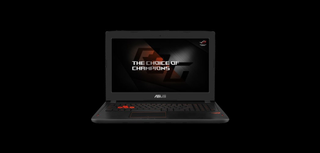
The Ideal gaming laptop
- Well-balanced Blend of hardware
- 120Hz G-Sync screen
- Reasonable price tag
Asus’s ROG Strix GL502VS is your best gaming laptop for the majority of users. It combines a strong feature build quality at a form factor, all at a sensible price.
I’m a huge fan of this form element. It’s large enough to provide you with the display property needed to play games with no squinting, but not so large (looking at you, 17-inchers) that it needs a distinctive gaming laptop back. In other words, it’s the form factor that allows a mobile gaming system be mobile.
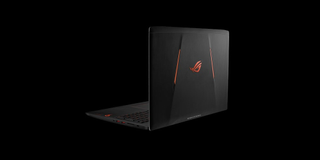
The ROG Strix GL502VS fulfills that promise of portability. Holding just 1.18 inches (30mm) thick, so it’s among the slimmer GTX 1070 notebooks we analyzed, being defeated only by the X5 v6 from Gigabyte’s Aorus department. A lot was we liked about the X5 v6 — not the least of which had been its own super-svelte frame — and in another world but it had been held back by questionable build quality and a price tag.
Specs
CPU: Intel Core i7-7700HQ (2.8GHz Base)
GPU: GeForce GTX 1070 8GB
RAM: 16GB DDR4-2400
Display: 15.6″ Broad View LCD using 120Hz refresh and G-Sync (1920×1080)
Storage: 128GB NVMe SSD, 1TB 5400 RPM HDD
Battery: 62Wh
Connectivity: headphone/mic combo port, 3x USB 3.0, 1x USB 3.1 Form C, 1x mini-DP, 1x HDMI, 1x RJ45, SD card
OS: Windows 10 Home 64-bit
Weight: 4.80 lbs.
Thickness: 1.2″ (30mm)
Like the majority of the laptops analyzed in this category, the GL502VS comes with a GTX 1070 GPU, 16GB DDR4 RAM, plus an Intel Core i7-7700HQ CPU. Aside from the form factor previously mentioned, is at its own display where it places itself aside. They are held back by panels using a 60Hz refresh rate where gambling laptops provide a IPS display. The GL502VS steps up things using a 1080p “IPS-like” matte panel using a 120Hz refresh rate. As it’s more than capable of keeping framerates well over 80 to 100 at 1080p frankly, much of this GTX 1070’s pixel-pushing electricity is wasted on a display. Together with all the GL502VS display, you aren’t forced to select between display tearing and higher than 60 FPS.
Considering the similarity of internals scored relatively near. Truth be told, the gap between the highest and lowest scores is small enough once you get into real usage to be mostly negligible. Nevertheless, the GL502VS scored against, more expensive notebooks at the top of the class.
In my opinion, the chassis of the GL502VS is a vast improvement over the bigger laptop, the upgraded version of a few of our past laptops of Asus. The GL502VS includes whilst toning down a few of the more aggressive styling a more understated look that preserves a little the angular aesthetic of this ROG brand–and at a smaller package. Obviously, the size of that the G752VS mostly comes from the large rear vents of it, but in any way it wasn’t limited by the smaller size of the GL502VS thermally in my own analyzing, and it comes in at a more appealing price point.
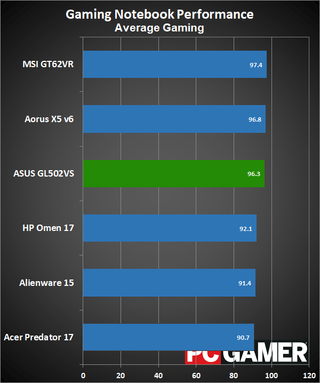
For connectivity, the GL502VS includes all the typical suspects: 3 USB 3.0 alongside a single USB Type-C, along with one each of HDMI and Mini DisplayPort for linking to outside monitors. Regrettably, it’s missing Thunderbolt 3 at the Type-C port, limiting transfers to 10Gbps rather than the blazing-fast 40Gbps of Thunderbolt 3.
The major disadvantage to this GL502VS is battery life: using only a 62 WHr battery, the power draw of this GTX 1070 signifies that the time untethered from the wall is limited to an hour or twowhen you aren’t gaming. The shortage of battery lifetime is more than made up for when thinking about the price of that the GL502VS. At $1,699, it’s hundreds of dollars cheaper than GTX 1070 notebooks. And while it’s perhaps not the most mobile–especially compared to this ultra-thin Razer Blade or even the coming Nvidia Max-Q notebooks–it’s small enough for a normal backpack and light enough to not break your back. Obviously, if you insist on more display real estate, then the GL702VS is exactly the exact same laptop in a frame.

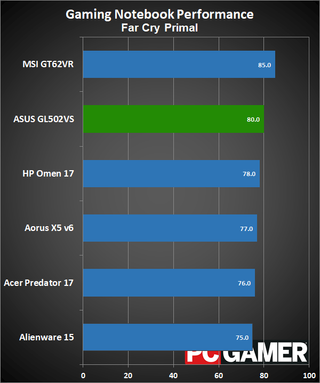
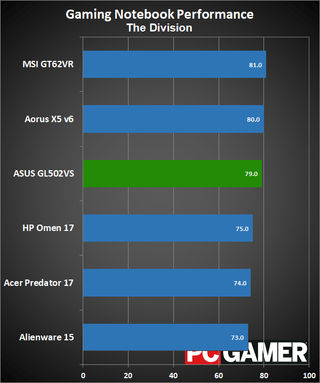

The best budget gaming laptop
- Very appealing price
- Solid 1080p functionality
- Good battery lifetime
For the guide’s funding category , I concentrated on gambling laptops. It’s likely to find gaming notebooks for under $1,000, but they often hit that lower price point by scaling down into some GTX 1050 or even 1050 Ti (or even older-generation) GPU, that can be significantly less capable at handling today’s most demanding games. The GTX 1060, on the other hand, provides a nice price-to-performance ratio that works nicely for 1080p 60fps gaming.
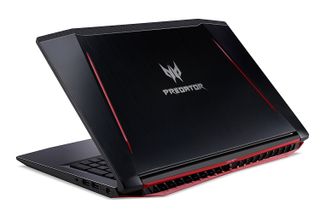
Acer’s Predator Helios 300 is your very best budget gaming laptop for the majority of users. Like many others in the class, it features 16GB DDR4 RAM, an Intel Core i7-7700HQ CPU, as well as the aforementioned Nvidia GeForce GTX 1060 GPU. The variance between notebooks analyzed is build quality, and price. And such as the GTX 1070 laptops analyzed for the entire category, the majority of the notebooks here generated effects that were comparable in all of our benchmarking tests. In other words, performance-wise, there is very little difference between the many similarly-spec’d notebooks in this budget. Here the GTX 1060 laptops fared against each other:
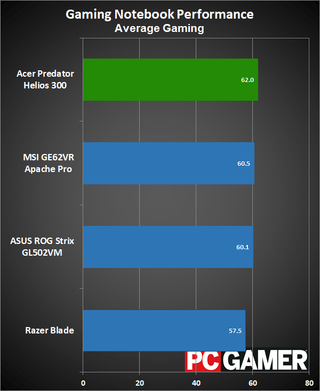
So if all of the notebooks played what exactly sets the Helios 300 apart? Two chief things: battery life and price. Let us talk price first. The majority of the laptops cost around $ 1,350, although I mentioned using a selection of $ 1,000 to $ 1,500 with this category. Save for one: that the Helios 300, that will be priced at $1,100 MSRP and widely accessible for $1,050. Considering the feature spec is virtually equal to this Asus ROG GL502VM ($1,350) and MSI GE62VR Apache Pro ($1,400), the Helios 300 ($1,050) handily wins on price alone.
Specs
CPU: Intel Core i7-7700HQ (2.8GHz Base)
GPU: GeForce GTX 1060 6GB
RAM: 16GB DDR4-2133
Display: 15.6″ IPS (1920×1080)
Storage: 256GB M.two SATA SSD
Battery: 48Wh
Connectivity: headphone/mic combo port, 2x USB 2.0, 1x USB 3.0 w/power, 1x USB 3.1 Form C, 1x HDMI, 1x RJ45, SD card
OS: Windows 10 Home 64-bit
Weight: 5.95 lbs.
Thickness: 1.5″ (33mm)
The one thing I discovered that the Helios 300 is missing, that might be worth paying an additional $250 for around the GL502VM, is G-Sync. The 1080p big-screen of the Helios 300 is nothing special–not as bright as a IPS display, but nowhere near as awful as the washed-out colors we have seen on some funding TN panels–but it will get the job done. With screen , however, you’ll be dealing with no G-Sync tearing your framerate drops under 60fps along with in case your switch off v-sync. Having said that, that the GTX 1060 will easily maintain 60fps with a couple of tweaked settings in pretty much any high-end match (remember that our fps benchmarks have settings cranked to the max, therefore a small tweak can easily get one of the additional 10 or even 20 fps required to maintain 60). Bearing that in mind, aiming for 60fps using v-sync on is a solid alternative to dealing with the price premium of Nvidia’s G-Sync technology.
Its superior battery life is another strong point, if price is not enough to sway you in the Helios 300. Just about all of the notebooks I analyzed (both within this category and many others) use only their dedicated graphics card, even during routine non-gaming use. This means that the GPU is drawing electricity all the time, cutting on battery lifetime down to only a couple of hours. The Helios 300, on the flip side, swaps over to incorporated images during non-gaming periods, improving battery life significantly. Without even plugging in enough for even a flight along with meetings the Helios 300 lasted more than four hours. With brightness that is lower and power mode, you can increase that to half an hour longer.
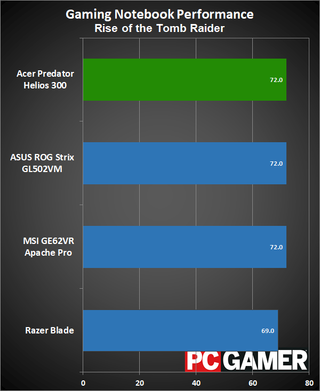
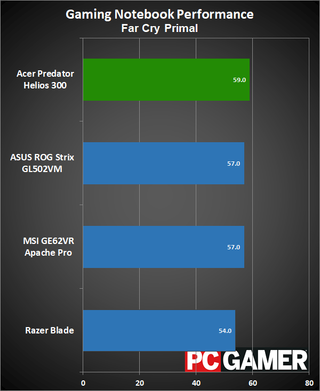
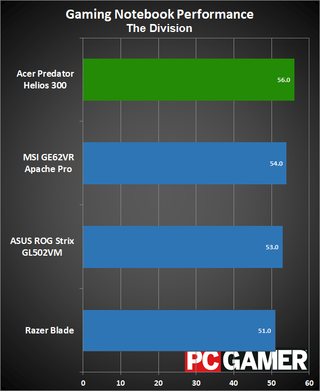
The way we test gaming notebooks and other people we analyzed
Why is one laptop more appealing than another in a gamer’s opinion? Is it light weight, for portability in between LAN parties? How about luxury hardware to facilitate the fastest frame prices? Surely connectivity issues. Gaming peripherals external screens and also storage can make you forget you are even using a notebook. Or maybe value is what matters. For a price that is low-enough, we’re all prepared to compromise on images quality, right? Proper?
That is the top contractors cram in as much processing muscle as you can, even when money is tight. And on peak of the rangeelements in cellular enclosures establish new performance records with each generation.
The majority of the notebooks we analyzed for the overall class offer comparable internals: Nvidia GTX 1070 GPU an Intel Core i7-7700HQ processor, 16GB DDR4 RAM, plus a display. In the same way, laptops at the budget category feature Nvidia GTX 1060 GPU an Intel Core i7-7700HQ CPU, 16GB DDR4 RAM, plus a display that is 1080p — though a few performance varied. The difference between versions usually comes down to dimensions, weight and storage alternatives, display features, and price. The similarity in parts resulted in relatively similar reference scores, together with the gap between lowest and highest scores not changing.
We run the following tests to measure performance and productivity on gambling laptops:
- Cinebench 15
- Tech ARP x264 HD
- CrystalDiskMark64 4K Read and Write
- 3DMark Fire Attack
- PCMark 8 Creative
For gambling, the built-in benchmarks are used by us on Rise of The Section, Far Cry Primal , and this Tomb Raider. Tests are conducted with the highest available images preset, together with V-sync and G-Sync disabled. All tests are conducted multiple times to make sure that throttling does not occur. In case that scores drop on subsequent tests, the lower (throttled) scores are used.

The competition
HP’s gaming branch Omen includes a offering at the laptop area, focusing on images while cutting corners elsewhere to keep down prices. It’s the most aggressive with all the GL502VS when it comes to cost when available for a similarly-spec’d system coming at $ 100. Additionally, it is available using a 4K monitor upgrade, if that is something you care for, but we recommend staying far from trying 4K on a laptop, as conducting that large in a resolution in matches requires a whole lot more graphical horsepower than the GTX 1070 can offer. We still like the GL502VS more than the Omen 17, since it has been the laptop we tested to offer a 120Hz display and comes at a form factor.
True to the provider’s namesake, the Alienware 15 (also available in 13 and 17-inch form factors) is your most gaming-focused in design of all the laptops we tested, using aggressive styling, bright LEDs along the board, and a backlight behind the touchpad that gives it a spooky alien-like glow. It’s also among the bulkiest, especially for a 15-inch, weighing 7.8 lbs. It’s an overall machine, held back by price–no doubt a premium you are paying for styling and the Alienware name.
I want to love the X5 v6, I truly do. The gaming branch Aorus of Gigabyte was ahead of the curve when it comes to powerhouses, as well as the notebook delivers on that promise. In a glance, it’s everything I need–It’s an extremely strong laptop in a few of the frames I’ve noticed, and will most likely continue to hold that title until the notebooks hit on the streets this season. Naturally, its space-saving engineering includes a price premium–at $2,249 (available), it’s the most expensive GTX 1070 laptop we tested. Even so, the price might be worth it, as it ships with a stunning 3K (2880 x 1620) resolution display–better than 1080p but not so tough as 4K–along with the form factor is actually spectacular.
My issue is that keyboard. I went through multiple test units of this X5 v6, and every time had an issue with the keyboard (that has full RGB backlight controller, incidentally). The first time keys endured from an annoying double-tap problem, although the unit’s keyboard felt in structure, and wouldn’t register keypresses. (And if you ask, yes, I had been fully up-to-date with appropriate drivers.) A cursory research finds that I’m with issues. YMMV, however, QC is apparently a problem here.
The Predator 17 laptop of Acer is more in competition with the I and at $1,899 it provides a persuasive case. It’s a solidly constructed laptop in case you don’t mind the heft (9.4 lbs) along with the aggressive Predator styling, but it’s not without difficulties. Where the screen would flicker at brightness settings, I experienced the exact same problem. This was mostly forgotten once I left the brightness close to max, but distractingly annoying for days when I did not need as much shine in a darkened room or wanted to save on battery lifetime. Much like the Aorus’s keyboard, I do not know how widespread the problem is, but it’s something to bear in mind, especially since Acer has had QC problems with its screens.
MSI’s GT62VR comes from the faculty of milder laptop designs, even though it’s a very clear improvement over MSI GT6 show from many generations back. I
source http://www.lighthousecomputersolution.com/the-very-best-gaming-laptops/
No comments:
Post a Comment